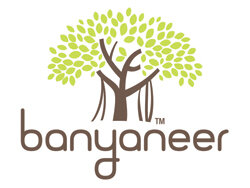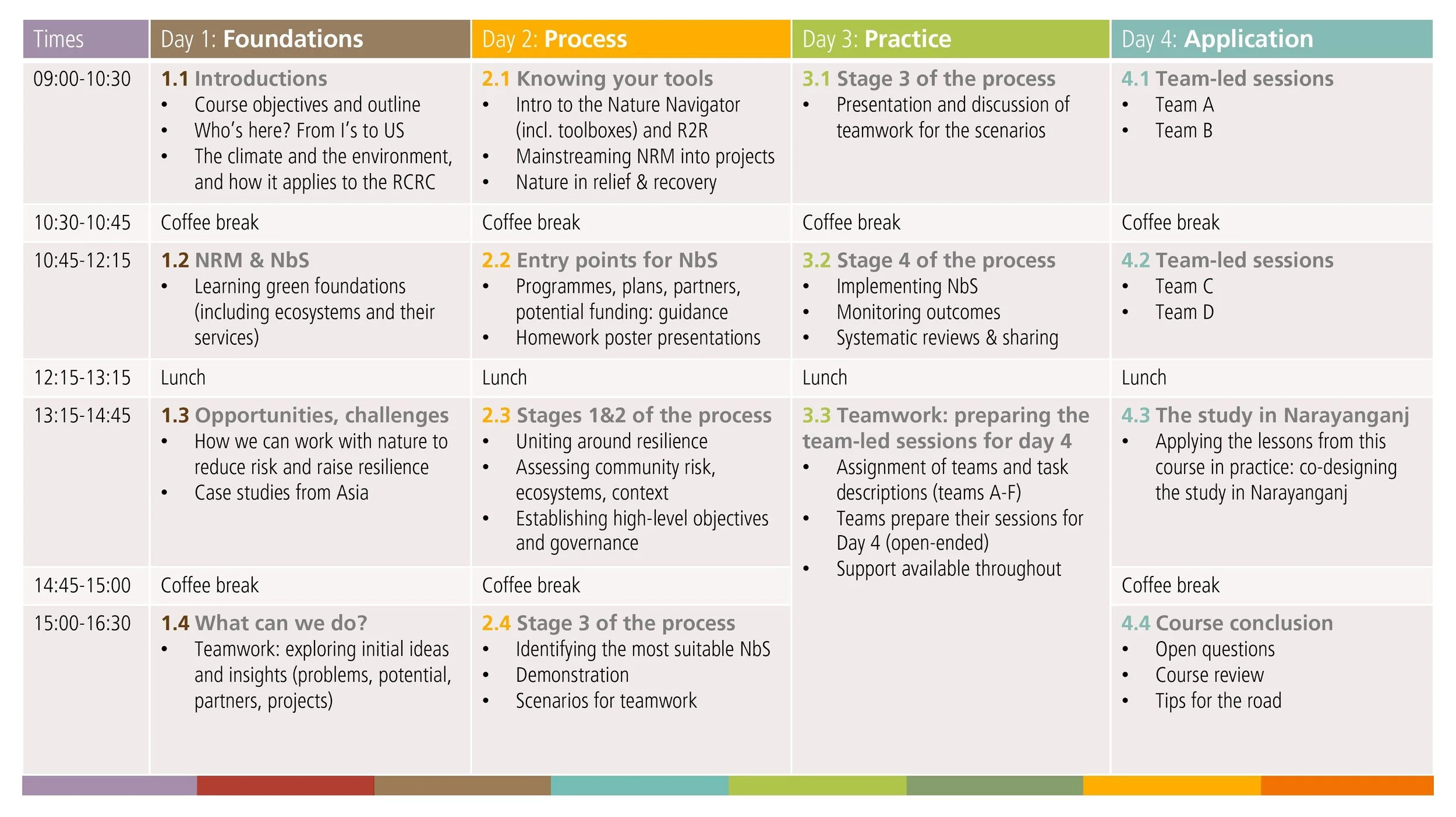WORKING WITH NATURE Bangladesh, JANUARY 15-18,2024
Welcome to our course page!
On this page, we have compiled all resources for our training course, provided by British Red Cross and Bangladesh Red Crescent Society. We have essential documents at the top (part A), then optional further reading (part B), and the resources for the specific sessions below in part C. Please note that part C is initially empty - however, we will add handouts and further documents into the respective session folders ahead of each session.
Happy reading, and see you at the course!
A. Essential documents
What’s on at what time? Here’s the overview…
This handbook will be the main reference for our course. We’ll go its through its chapters progressively, and hope you will find it useful! Maybe you have ideas on how to improve it further before it goes into general release?
B. FURTHER READING
Resilience & Risk
B.1 IFRC (2021). The Road Map to Community Resilience v2
This new version of the Road Map integrates the Enhanced Vulnerability and Capacity Assessment (EVCA) and guides through the process of strengthening community resilience.
B.2 CARE (2019). Climate vulnerability and capacity analysis handbook.
This updated second edition includes a range of great tools for community-based risk assessments. Can be used to complement the IFRC Road Map.
NBS key documents
B.3 UNDRR (2021) Nature-based Solutions for Disaster Risk Reduction: Words into Action.
This publication offers an excellent overview of NbS and links to the Sendai Framework. The section on main-streaming and upscaling is useful to link with government policies.
B.4 IUCN (2020). Global Standard for Nature-based Solutions.
This guide illustrates the eight criteria of the global standard with case studies and provides detailed indicators.
NBS in specific contexts
B.5 TNC (2021). The Blue Guide to coastal resilience.
A step-by-step guide to using NbS for DRR in coastal areas, the Blue Guide also links to more detailed manuals for specific ecosystems.
B.6 WWF (2016). Natural and nature-based flood management: A Green Guide.
A comprehensive guide for reducing flood risk in different landscapes/ecosystems as well as for specific flood types.
B.7 World Bank (2021). A Catalogue of Nature-Based Solutions for Urban Resilience.
This book looks at principles on integrating NbS into urban resilience planning, and features a catalogue of 14 solutions for the urban context.
B.8 Makino et al. (2021). The protective functions of forests in a changing climate.
This publication highlights how forests can protect people and infrastructure. It contains many detailed country reports from across Europe.
B.9 Iseman et al. (2021). Nature-based solutions in agriculture – The case and pathway for adoption.
This book offers an overview of NbS for agriculture. It looks at farmer perspectives, policy implications, and includes four case studies.
This detailed overview of sustainable land management practices shows how altered practices can reduce disaster risk. Includes very detailed descriptions of practices.
This standard reference offers excellent guidance on ecological restoration. It also includes great monitoring tools.
Background on disaster risk reduction
B.12 UNDRR (2019): Global Assessment Report on Disaster Risk Reduction
The status of disaster risk reduction, with an outlook and recommendations.
In this report, the IFRC looks at the impact of climate change under different scenarios, and what it means for the humanitarian world.
B.14 Hallegate et al. (2017): Unbreakable. Building the resilience of the poor in the face of disasters
An excellent study that looks at the disproportionate impact of disasters on poor populations, and what can be done about it.
C. Resources for sessions
C.1 Day 1
C.1.1 Handout (PDF) and presentation (PPT)
C.1.2 Nature-based solutions Bangladesh
C.1.3 National Adaptation Plan of Bangladesh (2023 - 2050)
C.1.4 Bangladesh Delta Plan 2100. Bangladesh in the 21st century (abridged version)
C.1.5 Mujib Climate Prosperity Plan Decade 2030
C.1.6 Narayanganj Climate Resilient City Action Plan
C.2 Day 2
C.2.1 Handout (PDF) and presentation (PPT)
C.2.2 Solution finder template
C.2.3 Solution finder completed example (Vulnerata)
C.2.4 Solution finder walk-through video
C.3 Day 3
C.3.1 Handout (PDF) and presentation (PPT)


















